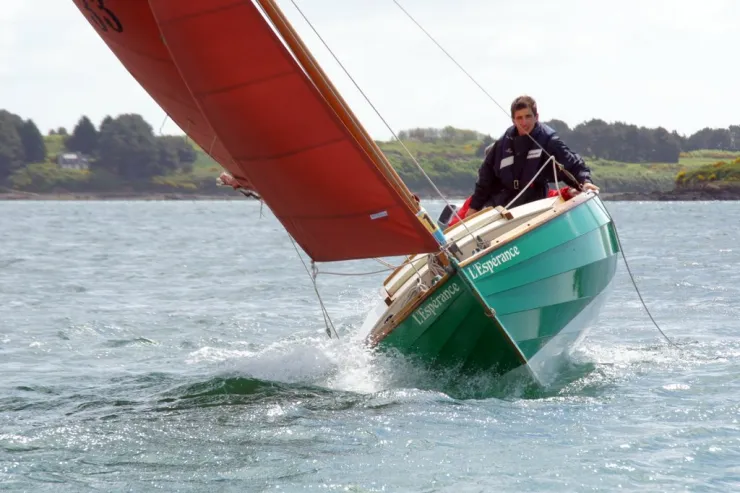
We manufacture Sailing Boat Manufacturers in South Africa. Check our website for more info about Classic sailing yachts, wooden sailing boats, new and vintage yachts, and luxury yachts for sale
In recent decades the trend toward lighter hull skins of composites required ply stresses to be correctly analyzed. One approach is a modification of the isotropic beam and plate method where laminated plate theory (also called classical lamination theory) is used to resolve the multiple-ply stack into a blended isotropic material of equivalent stiffness.
This is then used in the isotropic plate theory to determine a maximum plate strain. The strain is then applied back through the laminated plate theory to predict ply stress. This approach works well with balanced, symmetric laminates of predominantly woven and mat materials and was an easy fit to the empirical scantling rules.
As “Splendid Boats”, We are one of the most known Sailing Boat Manufacturers
When the laminates include significant unidirectional laminates or are unbalanced or asymmetric the blended plate theory does not produce acceptable results as the isotropic plate analysis cannot predict an accurate strain field. In this case, loads have to be resolved into forces and moments that may be directly analyzed using laminated plate theory. Due to the complexity involved in resolving these forces and moments, two approaches may commonly be followed. In the first case, a “worst case” loading location is found and the laminate is developed.
Typically this would be in the slamming area on the centreline. This laminate would then be applied to the entire hull or would be tapered slightly above the normal heeled waterline. Localized reinforcements would be applied for point loads such as chainplates and the mast and keel foundations. The second approach uses classical orthotropic plate theory as traditionally applied to large vessel plate and beam calculations. To maximize laminate tailoring, however, a resolution of all the loading is required.
The current method practiced is through the use of global hull finite element analysis (FEA). Predominantly used only in the domain of high-performance vessels, its use has been documented from dinghies to small and large cruising and racing yachts. An example of an America’s Cup Class yacht is shown in Figure 4.
Typical FEA of hull structures uses linear analysis, however, in places where large deformations or non-Hookean material properties are possible, then the geometric or material non-linear analysis must be used. Typical examples include snap-through buckling and thick core materials, respectively. A finite element analysis with shell elements, which is currently the most commonly used, does not work well for estimating the core strength of sandwich panels accurately.
For a dynamic response to events such as slamming especially, confirmation through physical testing is necessary. In the DNV rules, the test method is provided in order to predict the slamming impact speed of sandwich panels.
Materials used by the Sailing Boat Manufacturers
Composites are susceptible to out-of-plane damage due to impact loadings and such damage may be especially dangerous since it will probably be mostly internal delamination and remain undetected. Impact response is dependent on many impact and material parameters, and the impact behavior of GRP is complex (internal delamination, fiber failure, perforation, membrane, bending & shear effects, indentation, etc) it is very difficult to define exactly what we mean by impact behavior or even which type of impact behavior is ‘good’.
Firstly, which impact event should we consider? The response will vary greatly depending on which impact event we are considering. For example, one material/structural arrangement could well excel for a slow, head-on collision with a dockside, but be very fragile to a fast, oblique impact with a small, sharp floating object. The response to repeated water impact may well be a completely different case again, and specific tests have been developed to simulate this.
Secondly, should the material/structural arrangement absorb the impact energy, be resistant to penetration, or be resistant to impact damage? These are often mutually exclusive. For example, a Kevlar bullet-proof material (which is designed to absorb the impact energy of a projectile by suffering terminal damage in a one-time catastrophic event) would very quickly become structurally useless if used to construct a yacht deck (which is constantly subjected to minor impacts such as heavy foot-falls and equipment drops). Figure 5 shows how impact loads can be included in a multi-hull FE model.
